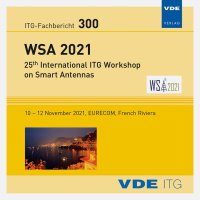Distributed Beamforming Design in Reduced-Rank MIMO Interference Channels and Application to Dynamic TDD
Conference: WSA 2021 - 25th International ITG Workshop on Smart Antennas
11/10/2021 - 11/12/2021 at French Riviera, France
Proceedings: ITG-Fb. 300: WSA 2021
Pages: 6Language: englishTyp: PDF
Authors:
Tibhirt, Amel (Orange Labs, Chatillon, France & Communication Systems Department, EURECOM, France)
Slock, Dirk (Communication Systems Department, EURECOM, France)
Yuan-Wu, Yi (Orange Labs, Chatillon, France)
Abstract:
Employing dynamic Time Division Duplexing (DynTDD) can increase the system-wide spectral efficiency of scenarios with varying and unbalanced uplink (UL) and downlink (DL) data traffic requirements. However when using DynTDD, a different DL/UL slot configuration is likely to be selected by neighboring cells, leading to Cross Link Interference (CLI) between the Base Stations (BS), which is known as BS-to-BS or DL-to-UL interference, and between User Equipments (UE) which is known as UE-to-UE or UL-to-DL interference. Rank deficient channels are frequently encountered in Multi-Input Multi-Output (MIMO) networks, due to poor scattering and keyhole effects, or when using Massive MIMO and moving to mmWave. While the implications of rank deficient channels are well understood for the single user point to point setting, less is known for interference networks. In this paper we study the Degrees of Freedom (DoF) focusing on the UE-to-UE interference, by establishing necessary conditions, for centralized and distributed designs. We discuss the variation of these conditions for different scenarios involving rank deficient channels. In particular we observe reduced DoF gaps between distributed and centralized techniques compared to existing results.


